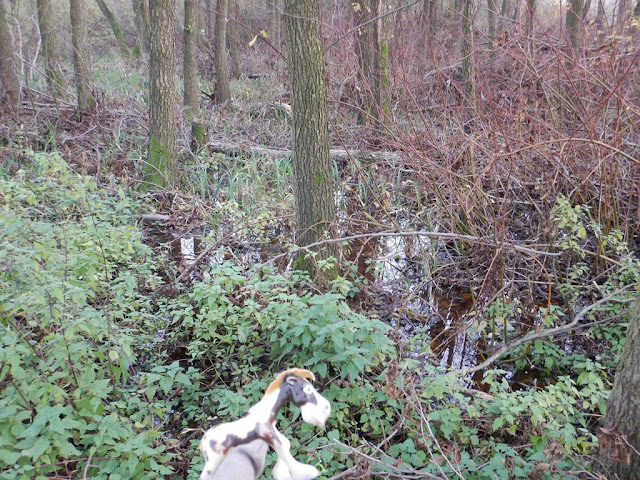Today we will stay in Biskupin but jump over centuries to another settlement, this time belonging to the Lusatian culture. Humans have lived here around three thousand years ago.
The area is covered with peat meadows as it is close to the Biskupin lake.
In the old days, there used to be a peninsula on the lake. On this marshy peninsula lied a fortified settlement, with an area of about 2 hectares.
The remainings of the settlement were discovered a hundred years ago by a school teacher who took his class on a trip here. His attention was caught by these piles standing in the marches.
These are authentic parts of the Lusatian settlement, most of which is nowadays 2-3 meters below ground level. Archaeologists have uncovered it some time ago but since wood is not coping well with fresh air, they have buried it back. Instead, they have built a detailed reconstruction.
The village was protected by a high wall, with one main gate.
From the top floor, defenders could throw rocks on the potential attackers.
Inside the village, the houses were built in rows, with narrow streets between them.
The wooden construction was reinforced with additional piles at the bottom, serving as foundations. The roof was covered with straw.
Unlike the long houses that we have seen last week, these building include several houses, each occupied by a single family. You can see it by the number of doors - each led to a separate room, being the individual house of a single family. All in all, around one hundred families lived in the village.
Inside the houses, the floor was covered with wood. You will quickly spot the loom and the fire place. Usually, in one of the corners lived the animals. They brought food and also served as living radiators.
The village was surrounded by a wall that was made, I am sure that you are not surprised, of wood.
It was a pretty solid construction, that allowed the defenders to walk on the upper part of the wall and watch out for enemies.
I hope that this trip in time was interesting to you. Let's take another pause to imagine what life looked like in this Lusatian settlement three thousand years ago, when the houses were full of families guarded by the watchtower on the horizon.














No comments:
Post a Comment